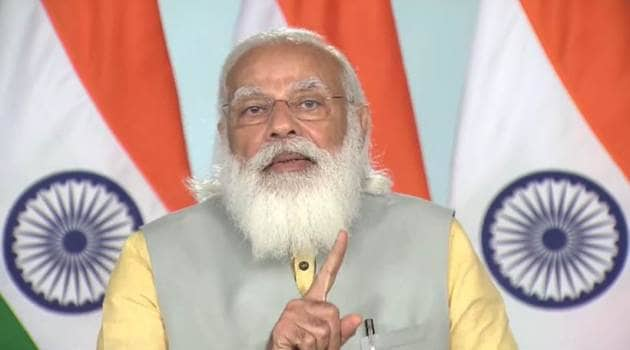World Wildlife Day 2021: Everything you need to know about this year’s theme, message, and places you can visit
The day is essentially a celebration of biodiversity. On December 20, 2013, the United Nations General Assembly had proclaimed March 3 as UN World Wildlife Day to celebrate and raise awareness about animals and plants.
 1 / 12
1 / 12On the occasion of World Wildlife Day today, Prime Minister Narendra Modi tweeted, urging citizens to "do everything possible to ensure protection of our forests and safe habitats for animals". His tweet read: "On #WorldWildlifeDay, I salute all those working towards wildlife protection. Be it lions, tigers and leopards, India is seeing a steady rise in the population of various animals. We should do everything possible to ensure protection of our forests and safe habitats for animals." (Source Twitter/@narendramodi)
You have exhausted your
monthly limit of free stories.Read more stories for free
with an Express account.Already have an account? Sign InUse code DIWALI10 for 10% off on your Express Edge plan.Already a subscriber? Sign InUse code DIWALI10 for 10% off on your Express Edge plan.This content is exclusive for our subscribers.Subscribe now to get unlimited access to The Indian Express exclusive and premium stories.Already a subscriber? Sign In- 2 / 12
Why is World Wildlife Day celebrated? The day is observed every year on March 3, to celebrate the world's flora and fauna, and to raise awareness about animals going extinct. For instance this year, Union Environment Minister Prakash Javadekar has tweeted that the government is "working on reintroduction of Cheetah, which went extinct in 1952", and that " this Big Cat will be a reality soon". (Photo: Pixabay)
- 3 / 12
The day is essentially a celebration of biodiversity. On December 20, 2013, the United Nations General Assembly had proclaimed March 3 as UN World Wildlife Day to celebrate and raise awareness about animals and plants. According to the UN, "between 200 and 350 million people live within or adjacent to forested areas around the world, relying on the various ecosystem services provided by forest and forest species for their livelihoods and to cover their most basic needs, including food, shelter, energy and medicines". (Photo: Pixabay)
- 4 / 12
This year, the World Wildlife Day will be celebrated under the theme 'Forests and Livelihoods: Sustaining People and Planet', as a way to highlight the role of forests, forest species and ecosystems services in sustaining the livelihoods of hundreds of millions of people globally, and particularly of indigenous and local communities with historic ties to forested and forest-adjacent areas, states UN. (Photo: Twitter/@UN)
- 5 / 12
It urges people to get involved. To share what they have learnt with friends and family. To spread the word, especially to children and youth, for they are future leaders of wildlife conservation and they "deserve a future where we humans live in harmony with wildlife that share the planet with us". You can use hashtags #WorldWildlifeDay #WWD2021 #ForestPeoplePlanet this year. (Photo: Pixabay)
- 6 / 12
And if you want to learn more about the wildlife in your country, here are some places you can visit, starting with the Jim Corbett National Park in Uttarakhand to spot and learn more about tigers, spotted deer, elephants, golden jackal, sambar deer, etc. (File photo)
- 7 / 12
You can also visit the Ranthambore National Park in Rajasthan, which is famous for its tigers, leopards, hyenas, jackals, jungle cats, Indian foxes and a wide range of birds like pelicans, ibis, flamingos, egrets, and parakeets. (Photo: Pixabay)
- 8 / 12
If you are interested in learning more about lions, head to the Gir National Park in Gujarat, which is best known for Asiatic lions. Besides the lions, you can also spot Indian leopards, sloth bears, jungle cats, striped hyenas, snakes, blackbucks, crocodiles, monitor lizards, and more here. (Express photo by Javed Raja)
- 9 / 12
In the southern part of the country, Karnataka's Bannerghatta Biological Park is quite popular. While you are here, check out the Butterfly Park and go on a tiger safari, to learn more about tigers, leopards, elephants, spotted deer, butterflies, snakes, and more. (Photo: Pixabay)
- 10 / 12
In Assam, there is the Kaziranga National Park, which is famous for its rhino and tiger population. Here, you can also learn about other animals like elephants, swamp deer, wild buffalo, etc. (Photo: Pixabay)
- 11 / 12
Hemis National Park in Ladakh is globally famous for its snow leopards, and is believed to have the highest density of them in any protected area in the world. Have you been here? (Photo: Pixabay)
- 12 / 12
There is no dearth of flora and fauna life in India, and there are many other such celebrated wildlife parks from where you can learn all about endangered species of animals, and what you can do on your part to protect them, and educate future generations of doing the same. (Photo: Pixabay)